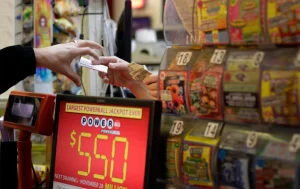Accessibility Adaptations in Roulette: Spinning the Wheel for Everyone

The hypnotic spin of the roulette wheel. The clatter of the ivory ball. The collective gasp of anticipation. For centuries, roulette has been a cornerstone of casino culture, a game of pure chance wrapped in elegant ritual. But what if you couldn’t see the wheel? Or hear the dealer’s call? Or physically place a chip on the felt?

For players with disabilities, these barriers were, for a long time, a hard stop. The traditional roulette table was a monument to inaccessibility. Thankfully, that’s changing. The industry is finally waking up to the fact that the thrill of the game should be available to all. Let’s dive into the fascinating world of accessibility adaptations that are, quite literally, changing the game.
Beyond Ramps: A Multi-Sensory Approach to Inclusion
Sure, physical access to the building is step one. But true inclusion goes much deeper. It’s about re-imagining the entire player experience from the ground up. We’re talking about adaptations for visual, auditory, and mobility impairments. It’s not just about getting to the table; it’s about being able to play once you’re there.
For Players with Visual Impairments
Roulette is an intensely visual game. Watching the ball, tracking the winning number, seeing your chips—it’s all sight-based. So, how do you adapt it? The solutions are as clever as they are effective.
One of the most significant innovations is audio-based roulette. Here’s the deal: these specialized tables use a combination of technologies. The dealer uses a headset to announce the start of betting, and players have a handheld console—often with Braille or high-contrast, large-print buttons—to place their bets.
But the real magic happens after “no more bets.” The winning number is determined by an optical scanner, and the result is then announced through speakers at the table and through a headphone jack at each console. The audio feedback is detailed: “The ball has landed on… red, seventeen.” This auditory layer replaces the visual cue entirely.
Some systems even offer tactile markings on the console or, in more advanced setups, a tactile roulette wheel with Braille numbers or distinct physical markers for sections like red/black or odd/even. It’s a way to feel the game, not just hear it.
For Players with Mobility or Dexterity Challenges
Let’s be honest, the classic roulette table is high, the felt is wide, and placing a chip on a specific number can be a stretch—literally. For someone with limited reach, a tremor, or who uses a wheelchair, this design is a major obstacle.
The adaptation? Electronic betting interfaces. These are the same consoles often used for visual impairments, and they’re a game-changer for mobility, too. Players can place complex bets with the push of a button without ever needing to reach across the table. It eliminates the social anxiety of fumbling with chips or needing constant assistance from the dealer.
Furthermore, casinos are increasingly designing wheelchair-accessible gaming tables with lower heights and clear knee space. It’s a simple physical modification that makes a world of difference, allowing for a comfortable and dignified playing position.
The Digital Frontier: Online Roulette’s Built-In Advantages
Honestly, the online world got a head start on accessibility. Screen readers, voice control software, and customizable interfaces are the norm in web design, and online casinos have had to keep up. This makes accessible online roulette games a powerful option.
Think about it. A well-designed online roulette game can be navigated entirely with a keyboard. The betting grid can be read aloud by a screen reader. Visual settings can often be adjusted for color blindness or high contrast. The game’s pace is controlled by the player, reducing the pressure that can come at a busy physical table.
That said, not all online platforms are created equal. The key is to look for sites that adhere to Web Content Accessibility Guidelines (WCAG). These are the gold standard for making digital content usable for people with a wide range of disabilities.
What Casinos Are Doing (And What They Should Do Better)
Progress is being made, but it’s patchy. Major casino hubs in Las Vegas, Macau, and Europe are leading the charge, installing a handful of accessible tables. But you might still have to search for them. The current trend is promising, but the implementation is often inconsistent.
Here’s a quick look at the typical adaptations you might find:
| Type of Adaptation | Key Features | Primary Benefit |
| Audio Roulette Terminal | Handheld console, audio headset, dealer mic, optical scanner. | Full gameplay without visual cues. |
| Electronic Betting Interface | Touchscreen or button-based console linked to main table. | Enables betting without physical reach or dexterity. |
| Lowered Table Design | Reduced height, clear underspace. | Wheelchair accessibility and comfort. |
| Tactile Wheel Markings | Braille, raised numbers, distinct textures. | Provides a physical reference point on the wheel. |
So, what’s the next step? Honestly, it’s about moving from isolated adaptations to a holistic, standard practice. Training staff to be proactively helpful—not just reactive—is huge. Making information about accessible gaming options easy to find on a casino’s website is another simple but often overlooked step.
The Human Element: Why This Matters Beyond Compliance
At its heart, this isn’t just about regulatory checkboxes or corporate social responsibility reports. It’s about the spirit of the game. Roulette is a social equalizer—a game where everyone faces the same odds. The adaptations we’ve talked about are simply tools to ensure that the starting line is the same for every player.
They restore a sense of agency and independence. The ability to play a game on your own terms, without needing to ask for help at every turn, is profoundly empowering. It transforms the experience from one of frustration to one of pure, unadulterated fun.
The whir of the wheel is a universal call. And now, more than ever, the answer to that call can be, “I’m in.”








